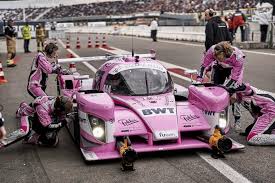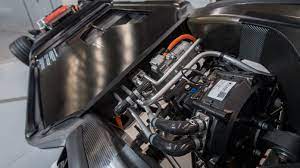The automotive industry
Undergone a significant transformation in recent years, with electric vehicles (EVs) rapidly gaining popularity. As electric vehicle technology continues to improve, many are beginning to wonder about the future of racing. Will gasoline-powered vehicles be phased out entirely, or will they remain a viable option alongside EVs? In this article, we will explore the future of racing and the battle between electric and gasoline-powered vehicles.
Electric vehicles have gained a lot of traction in recent years, with many major automakers investing heavily in the development of electric cars. In fact, EVs are becoming increasingly common on our roads, with the number of electric cars sold worldwide expected to reach 145 million by 2030. This trend towards electrification has also affected the racing world, with the Formula E championship being introduced in 2014 as the first all-electric racing series.
The advantages of electric vehicles in racing are numerous
EVs have instant torque, meaning they can accelerate more quickly than gasoline-powered cars. This instant acceleration can make for some exciting racing, as drivers can go from 0 to 60 mph in just a few seconds. Additionally, electric cars are much quieter than gasoline-powered cars, which can make for a more enjoyable experience for fans in the stands.
Another significant advantage of EVs in racing is that they are much more environmentally friendly than gasoline-powered cars. With electric cars, there are no emissions from the tailpipe, making them a cleaner option for racing. This can be particularly important for races held in urban areas, where air pollution is a significant concern. In fact, the Formula E championship was specifically created to showcase the potential of electric vehicles in reducing air pollution in cities.
However, there are also some downsides to electric vehicles in racing. One of the most significant disadvantages of EVs is their limited range. While electric cars have come a long way in terms of range in recent years, they still cannot match the range of gasoline-powered cars. This can make longer races challenging for electric cars, as they may need to stop and recharge their batteries mid-race. Additionally, the batteries in electric cars can be quite heavy, which can impact the handling of the car.

Gasoline-powered cars
On the other hand, have been the dominant force in racing for decades. Gasoline-powered engines are powerful and can produce high speeds, making them a favorite of racing enthusiasts. Additionally, gasoline-powered cars have a much longer range than electric cars, meaning they can complete longer races without needing to refuel.
However, there are also some significant drawbacks to gasoline-powered cars in racing. One of the biggest concerns is their impact on the environment. Gasoline-powered cars produce emissions from their tailpipes, contributing to air pollution and climate change. In an era where environmental concerns are at the forefront of public consciousness, this is a significant issue that cannot be ignored.
Another disadvantage of gasoline-powered cars in racing is their noise level. While some fans love the sound of a roaring engine, others find it to be too loud and disruptive. Additionally, noise pollution can be a problem for races held in urban areas, where the noise can be a disturbance to local residents.
So, what does the future of racing look like? It is likely that both electric and gasoline-powered vehicles will continue to play a role in racing for the foreseeable future. However, as electric vehicle technology continues to improve, it is possible that electric cars will become the dominant force in racing.
One area where electric vehicles are already starting to make their mark is in off-road racing. The Extreme E championship, which launched in 2021, is an all-electric off-road racing series that aims to showcase the potential of electric vehicles in extreme environments. The vehicles used in the championship are capable of handling rough terrain and extreme weather conditions, making them a perfect fit

for off-road racing.
The Formula E championship is also continuing to grow in popularity, with more major automakers joining the series each year. The championship has also introduced some exciting new features, such as Attack Mode, which allows drivers to gain an extra burst of speed by driving through a designated area of the track.
However, gasoline-powered cars are not going away anytime soon. Many of the world’s most prestigious racing events, such as the Indy 500 and the 24 Hours of Le Mans, still use gasoline-powered cars. Additionally, many racing enthusiasts still have a fondness for the sound and power of gasoline-powered engines.
It is possible that we may see a shift towards hybrid vehicles in racing, which combine the benefits of electric and gasoline-powered cars. Hybrid vehicles can offer the instant torque of electric vehicles, while also providing a longer range thanks to their gasoline-powered engines. Additionally, hybrid vehicles can be more environmentally friendly than gasoline-powered cars, as they produce fewer emissions.
Another factor to consider is the development of new technologies such as hydrogen fuel cells. Hydrogen fuel cell vehicles are powered by electricity generated by a chemical reaction between hydrogen and oxygen, producing only water vapor as a by-product. While hydrogen fuel cell vehicles are still in the early stages of development, they have the potential to be a game-changer in racing and could provide a more sustainable option than either electric or gasoline-powered cars.
Ultimately, the future of racing will depend on a variety of factors, including technological developments, environmental concerns, and consumer demand. While electric vehicles are gaining popularity, there will always be a place for gasoline-powered cars in racing. However, it is likely that we will see a shift towards more sustainable and environmentally friendly options in the coming years.
Conclusion
The battle between electric and gasoline-powered vehicles in racing is far from over. Both types of vehicles have their advantages and disadvantages, and it is likely that we will continue to see a mix of electric and gasoline-powered cars in racing for the foreseeable future. However, as technology continues to improve, it is possible that we may see a shift towards more sustainable and environmentally friendly options, such as hybrid or hydrogen fuel cell vehicles. Whatever the future holds, one thing is for sure – racing will continue to captivate audiences around the world for years to come.














